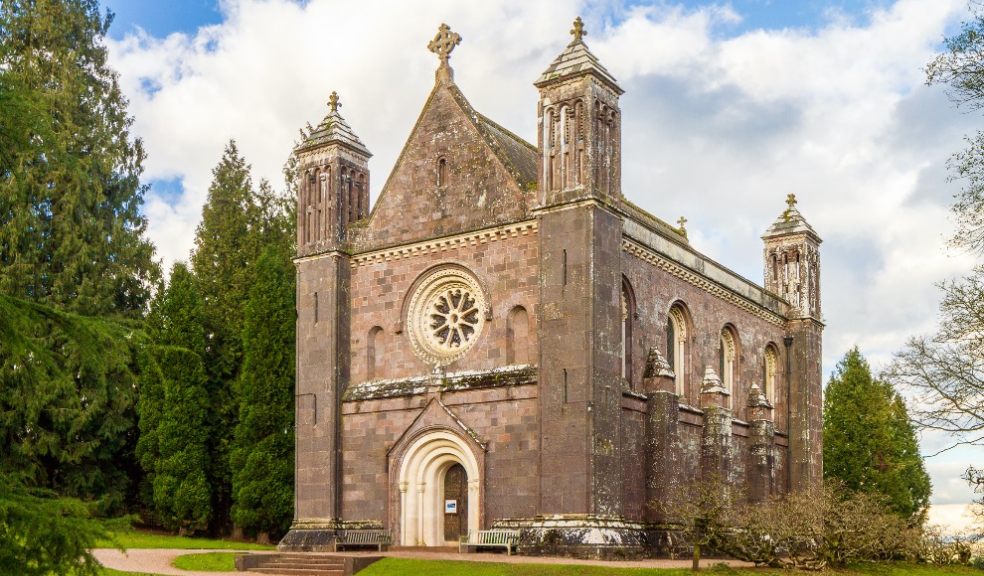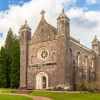
Phase one of conservation work on Killerton’s Grade I listed chapel completed
The first phase of conservation work on National Trust Killerton’s historic Grade I listed chapel is now complete.
The restoration of the chapel has seen repairs to different elements of the building. The iconic rose window, which was showing signs of decay, has been removed, re-leaded and reinstated. Broken panes in some of the other stained-glass windows have been repaired and cleaned. Tom Coombe, Collections and House Manager at Killerton, talks excitedly, “I was delighted to see the rose window return to Killerton after being cleaned and conserved. The nineteenth century newspapers reported that the light from the window created a ‘celestial’ light on the day of the Chapel’s consecration, it is spine tingling to experience that same affect today”.
The window was always intended to be a striking feature of the building and historic letters and illustrations sent between St Thomas Acland and Cockerell show the initial architectural designs. They also highlight Cockrell’s apparent upset that the chapel was to be used privately and not as a grand building.
Tom goes on to explain ‘It has been fantastic to learn more about the construction of this fascinating building as part of the project. The correspondence between Sir Thomas and Cockerell has shown that Sir Thomas was heavily involved in the design of the building, suggesting that the finished design reflected his values and beliefs.’
The restoration work has been extensive. Roofing and leadwork have also been repaired or replaced, as well as cracked downpipes. Existing drains were found to be blocked by tree roots and have been rerouted to help divert water away from the chapel. The stonework on the chapel has also been reviewed, repairs have reduced weathering and damage to the building. Experts also applied a shelter coat, which is a thin mortar used as an overcoat to reduce the deterioration of the stone.
Restoring the stonework came with its own challenges as matching local stone is hard to come by. However, with the help of a geologist and the Royal Geographical Survey, suitable stone was found in a Devon quarry that had reopened in 2020 after being closed for 800 years.
Archaeological investigations took place during these works and uncovered the remains of a very rare Hypocaust system, which originally heated the chapel. This system lies underneath the existing floor. The investigations also discovered that some features of the build were re-used elements of earlier buildings, including wooden panelling and spiral stone steps leading to the south turret, which are thought to be from a local building in Killerton or Columbjohn. Whilst these features are not in the public areas, they are significant finds for the history of the chapel.
Much of this restoration is now complete, with work being managed around the greater and lesser horseshoe bats that are present in the loft void and crypt. There will be a halt in work over the winter months to allow the bats to hibernate undisturbed. The remainder of the work will be completed in the spring.
Visitors to Killerton are now able to view the chapel without any fencing or obstruction for the first time since 2019. Phase two of the conservation work will include new access paths, heating, and lighting. We aim to encourage the use and enjoyment of this wonderful building, and its future is now secured for future generations to enjoy.



















